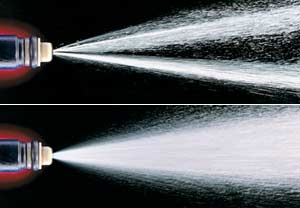I have had customers over time purchase bigger injectors or ask for help installing fuel systems into their N/A near bone stock street cars. If you have a stock running naturally aspirated vehicle, manipulating your fuel system by adding parts which increase fuel volumes into the engine is not a good thing to do unless you put on some sort of forced induction to compensate.
Consider that a stoichimetric combustion ratio for gasoline is 14.7:1. Stoichimetric is the idea combustion process where all of the gas is burned completely. I’m sure you are familiar with running rich or lean, this is what dictates that idea. The ratio is mentioned above “14.7:1” is how many parts of air there is to fuel in a combustion. A ratio with a mixture less than 14.7:1 will result in left over fuel after the combustion (rich), a ratio with a mixture more than 14.7:1 is considered lean.
A good air fuel ratio on a turbo car for optimal performance is generally accepted among tuners to be “13:1”, thirteen parts of air to one part of fuel. That is on the rich side, but this is good since it brings the combustion temps down. When vehicles come from the factory, naturally aspirated vehicles are tuned to 11:1-12:1 at wide open throttle, while turbo charged vehicles have shown to be tuned at 10:1-11:1 at wide open throttle. For the sake of vehicle production speed, a generic tune is placed on all car computer ECUs to insure that they all run relatively safe since not every single engine operates in the exact same manner. Fine tuning your engine performance to lean out your mixture will yield in a more efficient combustion which translates into more horsepower.
Lets say we run start running an air fuel ratio for example of 16:1. This is considered running too lean. By running too lean will generate extremely high temps, which in turn will cause the mixture to start igniting before the piston is even top dead center which is what we call “knock”, or “detonation”.
Understanding the basics of focusing on how fuel effects performance, hopefully you see why installing bigger injectors, a bigger fuel pump would cause you to run rich, lose horse power and potentially run into issues on a stock naturally aspirated vehicle configuration. Consider fuel upgrades when doing forced induction upgrades since potentially your stock fuel system won’t be able to keep up with the extra air demand that you are forcing into the engine.
I just want to clarify that I wrote this article based on what people are doing with stock naturally aspirated street cars they buy from the dealership. I understand that naturally aspirated high performance race engines do need various fuel mods.
A tool we offer used to tune and measure your air fuel ratios is a Wideband O2 sensor offered by AEM. Click for more information about the AEM UEGO Wideband.

